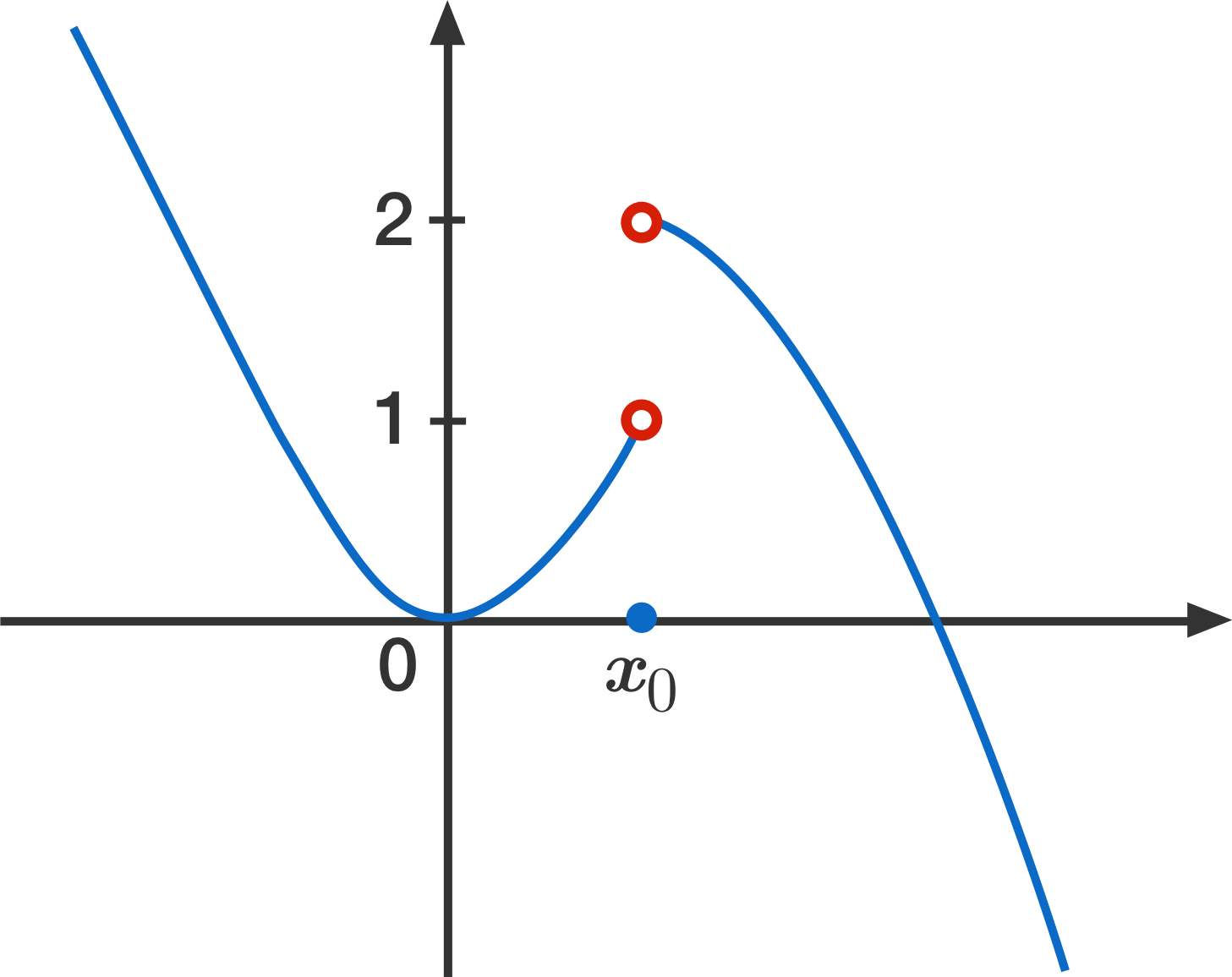Can Limit Exist if Its Not Continuous
A common situation where the limit of a function does not exist is when the one-sided limits exist and are not equal: the function "jumps" at the point.
 The limit of at does not exist. [1]
The limit of at does not exist. [1]
For the function in the picture, the one-sided limits and both exist, but they are not the same, which is a requirement for the (two-sided) limit to exist. This is usually written
where "DNE" stands for "does not exist."
Select one or more
Let then which of the following are correct?
Notation: denotes the floor function.
Another common situation when limits do not exist involves the function "blowing up" to or The graph is characterized by a vertical asymptote at
 The one-sided limits of at do not exist. [2]
The one-sided limits of at do not exist. [2]
While it is correct to say that and do not exist, in this case the limits are generally written as
This is the standard notation that has the benefit of being more specific about the way in which these limits fail to exist. For the formal definitions, see the infinite limits section.
When the one-sided limits blow up in the same way, this can be shortened to a single two-sided limit, e.g.
So,
but it should be emphasized that does not exist; saying that it "equals " is just a way of describing why it does not exist.
The third class of functions which give non-existent limits are the most exotic. If does not jump or blow up at but does not exist, the general picture is that takes on multiple values which are far away from each other, even when its argument moves closer and closer to
The standard example is near
The function oscillates infinitely often as it approaches 0. [3]
If were true for some then the definition of limit would imply that there was an open interval such that the values of for in that interval were within, say, of But no matter how small might be, it would have to contain and for some sufficiently large Since and this is a contradiction.
All ; all Irrational ; all Irrational ; irrational No ; all No ; no
Let and be two functions defined on by the formulas as described above.
For which does the (deleted) exist?
For which does the (deleted) exist?
It is worth emphasizing that the above examples are all of functions that are defined at every point in an open interval around the point in question, except possibly for itself. There are other examples of functions which do not have two-sided limits at because this assumption fails.
does not exist for the simple reason that is not defined in any open interval containing since its domain is
is an endpoint of the domain for [4]
- Alexandrov, O. Discontinuity. Retrieved September 12, 2005, from https://commons.wikimedia.org/wiki/File:Discontinuity_jump.eps.png
- Richards, G. Rectangular hyperbola. Retrieved July 2, 2008, from https://commons.wikimedia.org/wiki/File:Rectangular_hyperbola.svg
- Thoma, M. Sin(1/x). Retrieved September 18, 2012, from https://commons.wikimedia.org/wiki/File:Sin%281x%29.svg
- Richards, G. Square root. Retrieved July 2, 2008, from https://commons.wikimedia.org/wiki/File:Square_root_0_25.svg
Source: https://brilliant.org/wiki/when-does-a-limit-exist/
0 Response to "Can Limit Exist if Its Not Continuous"
Post a Comment